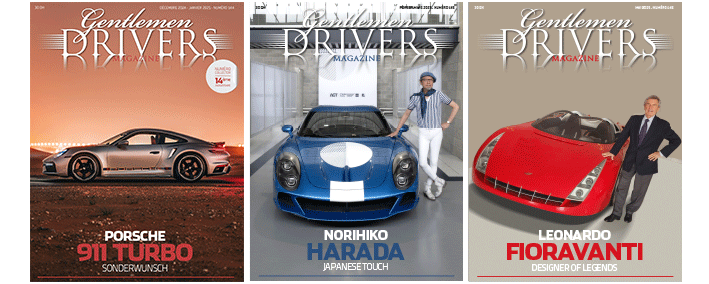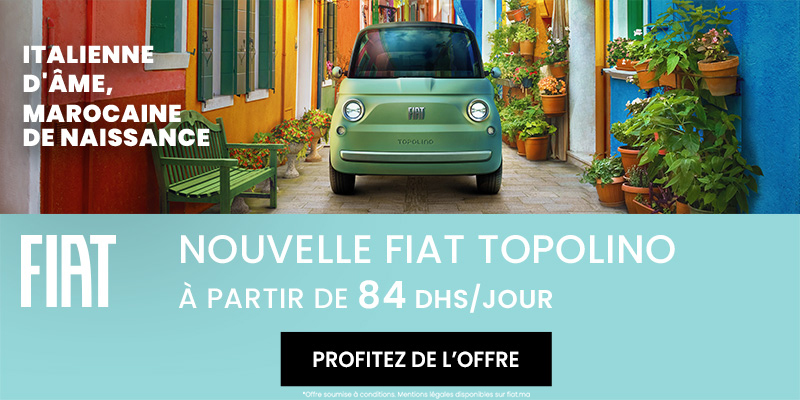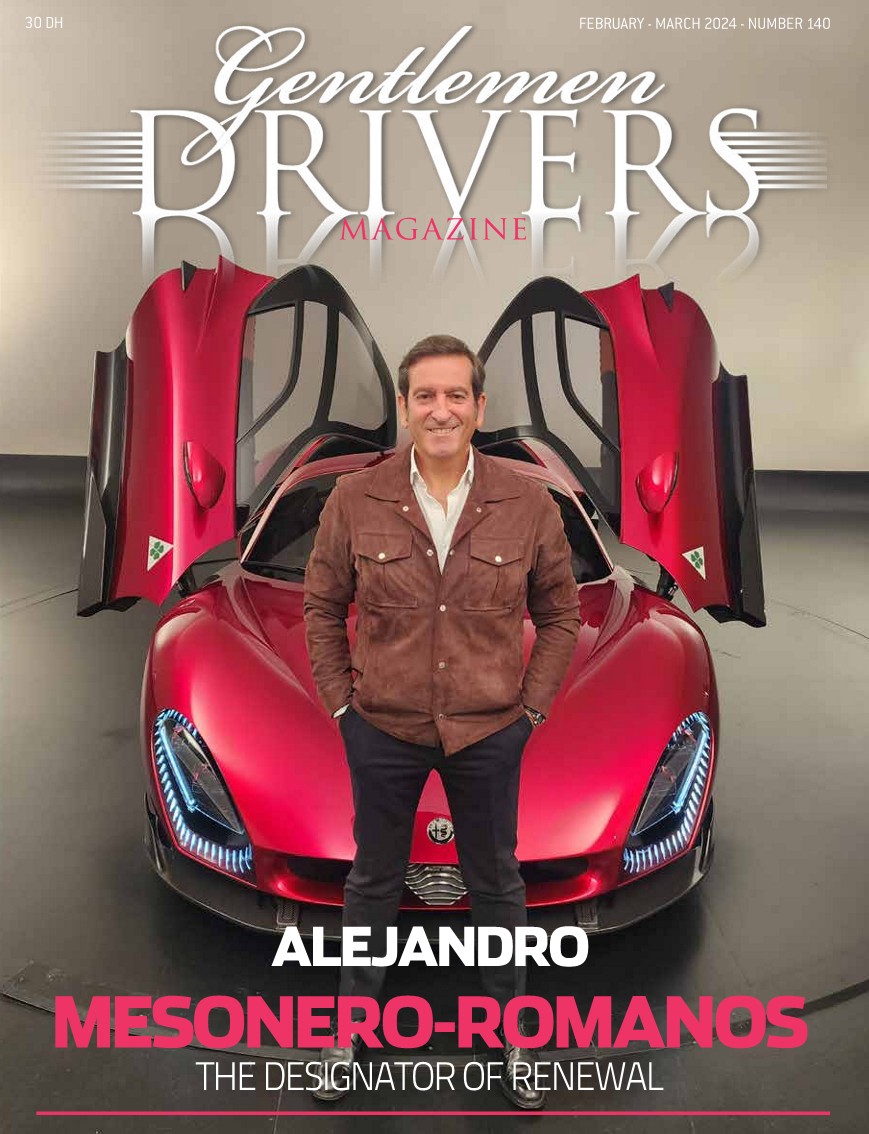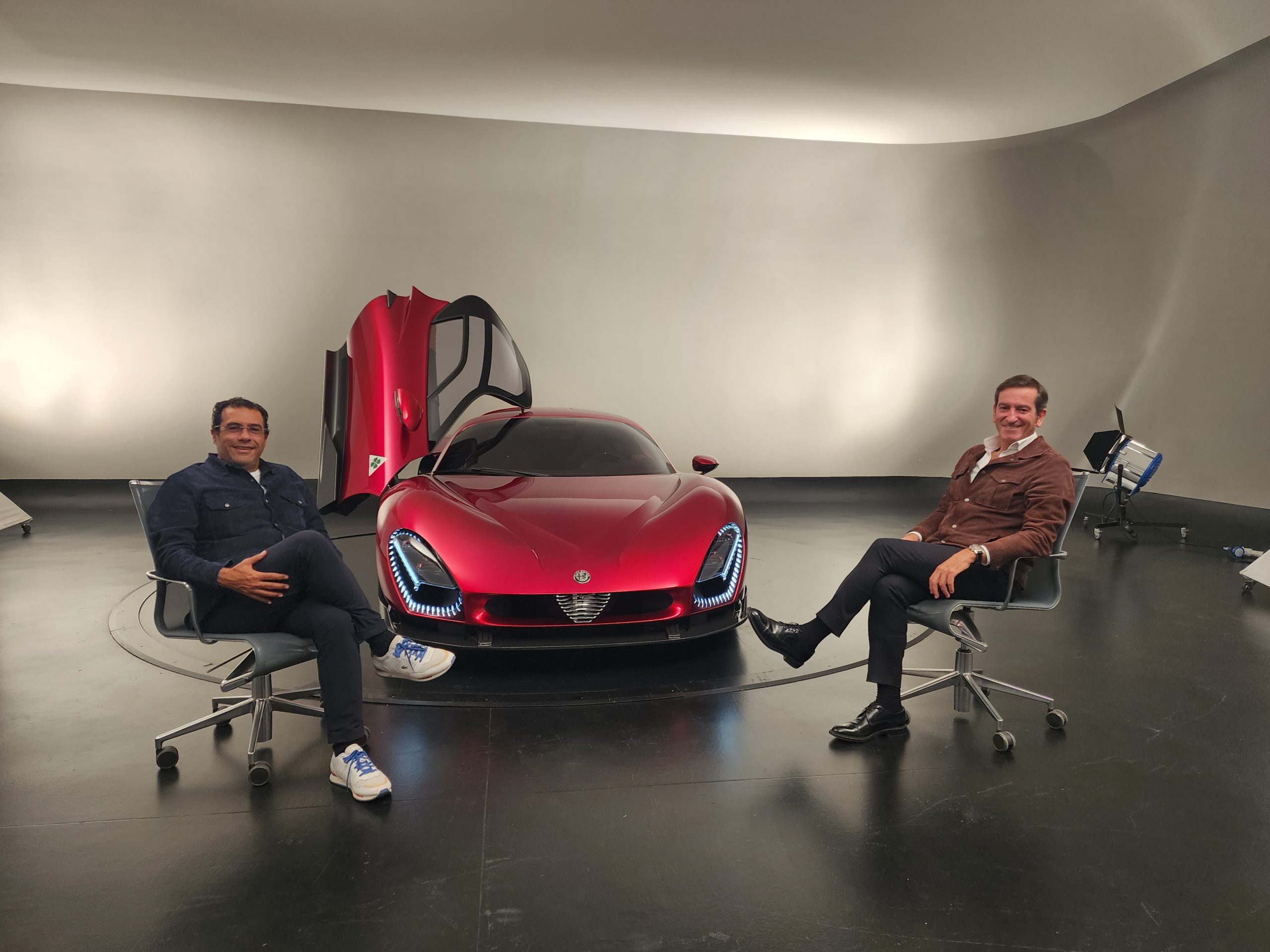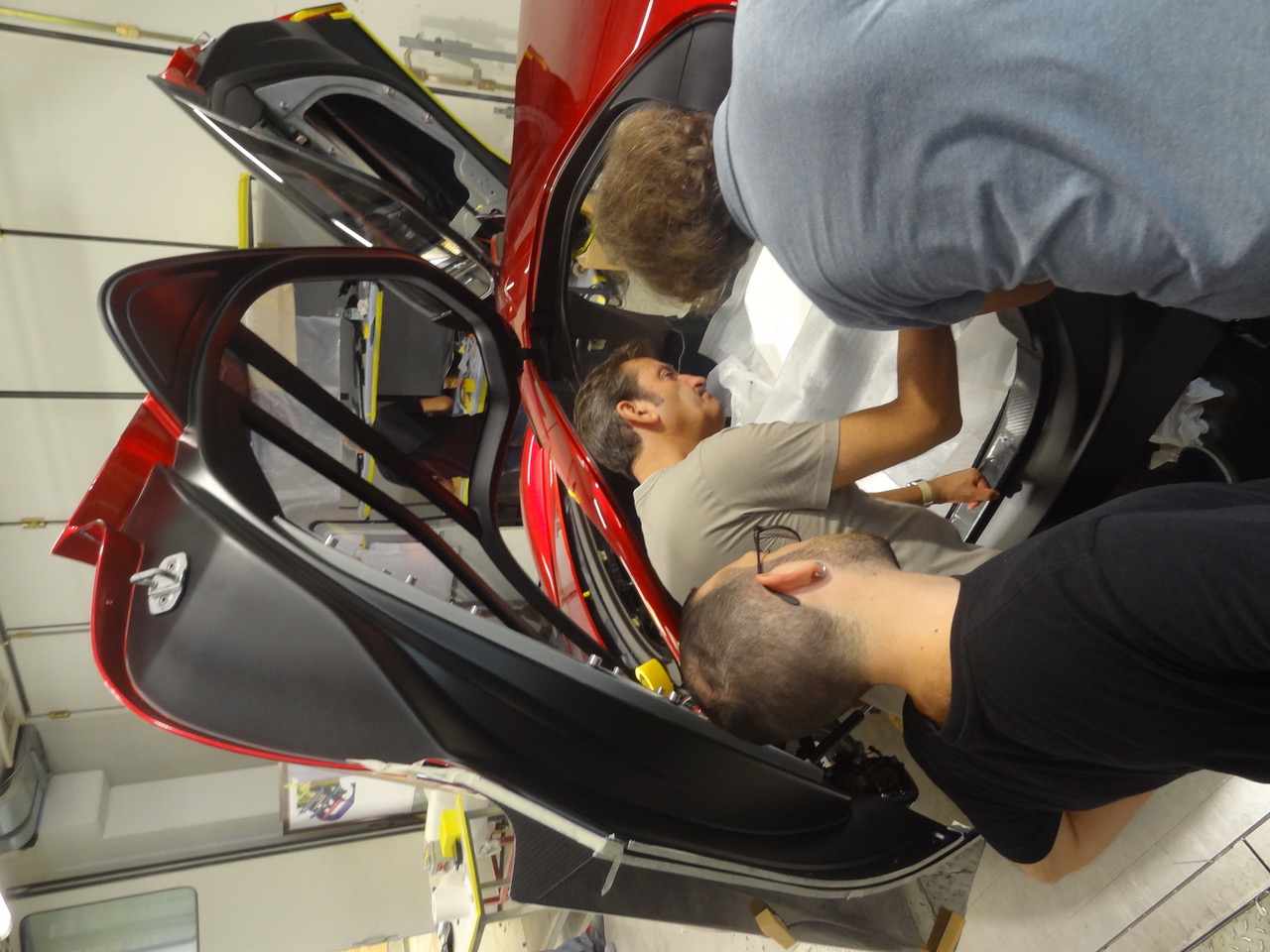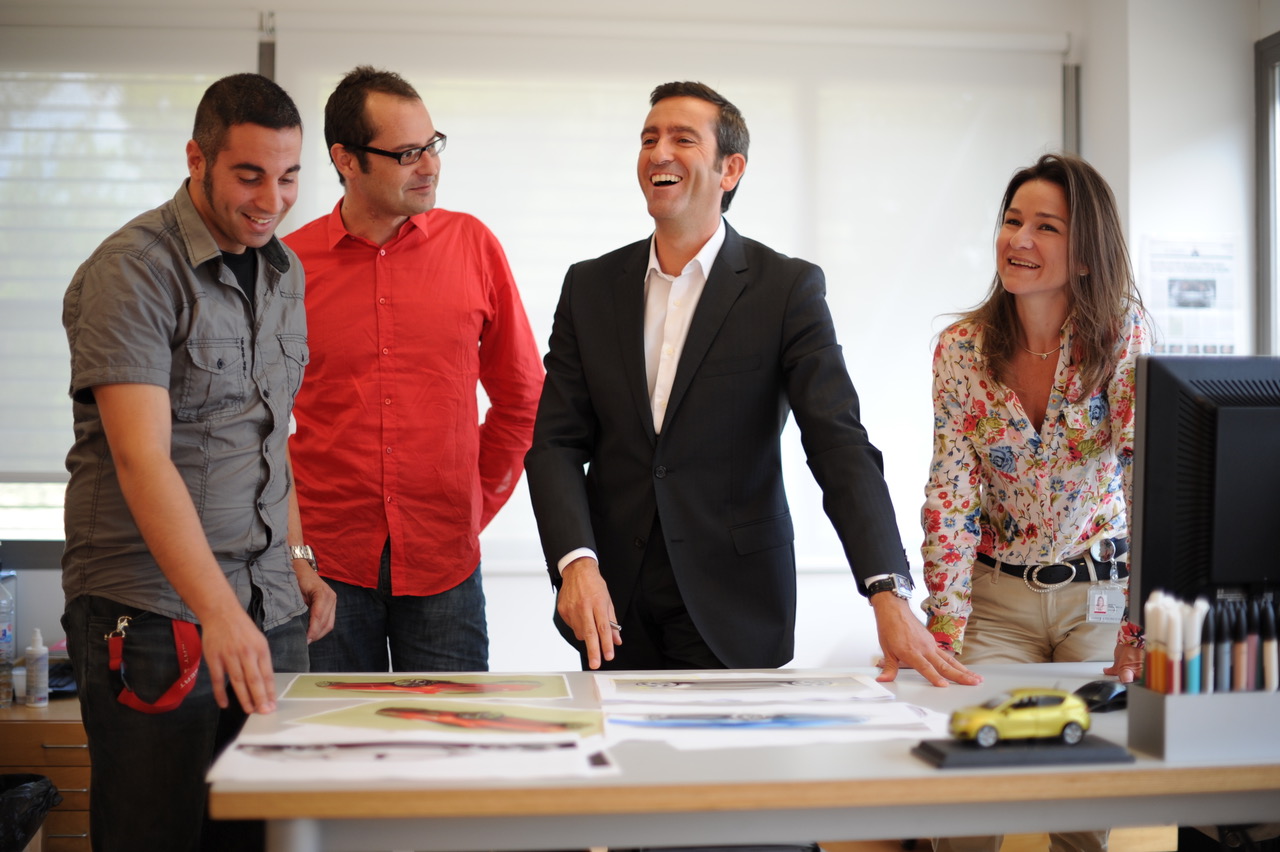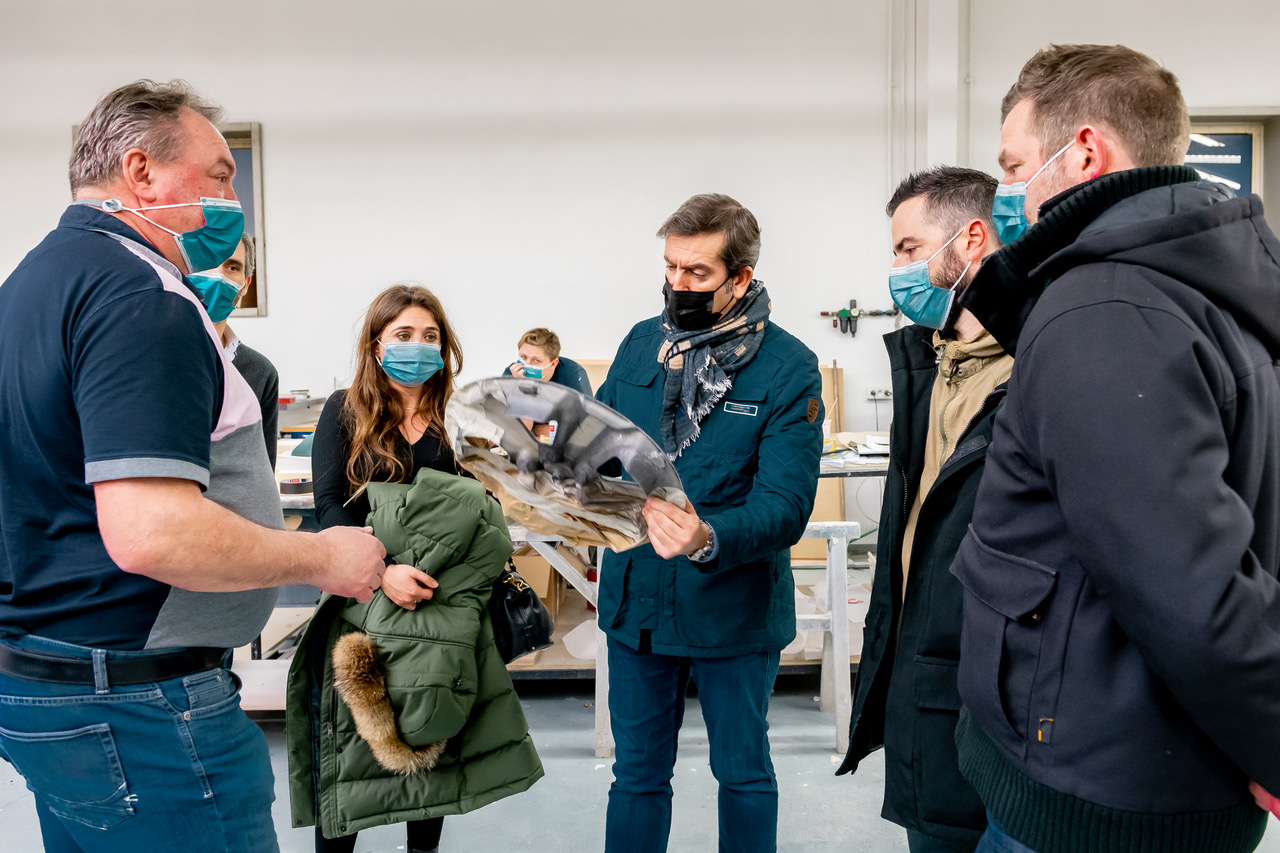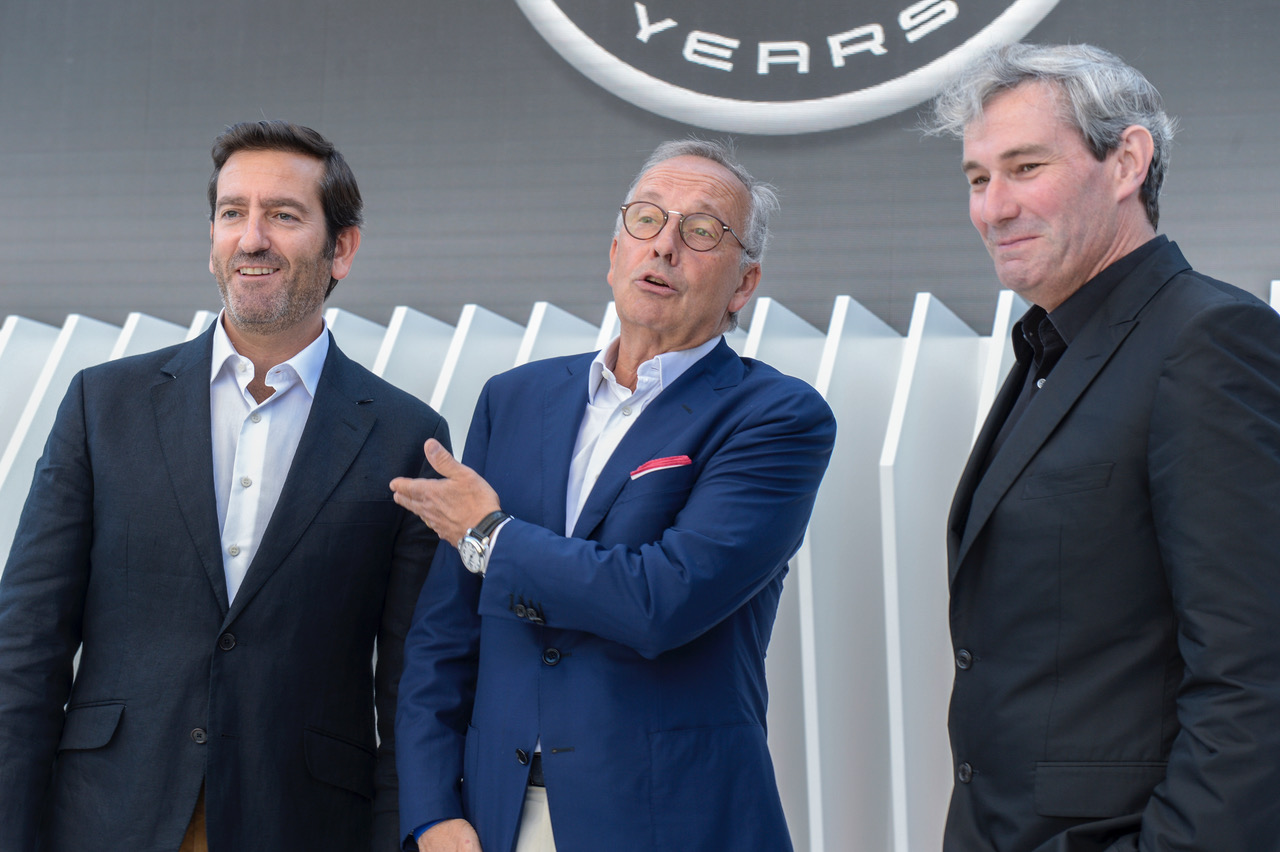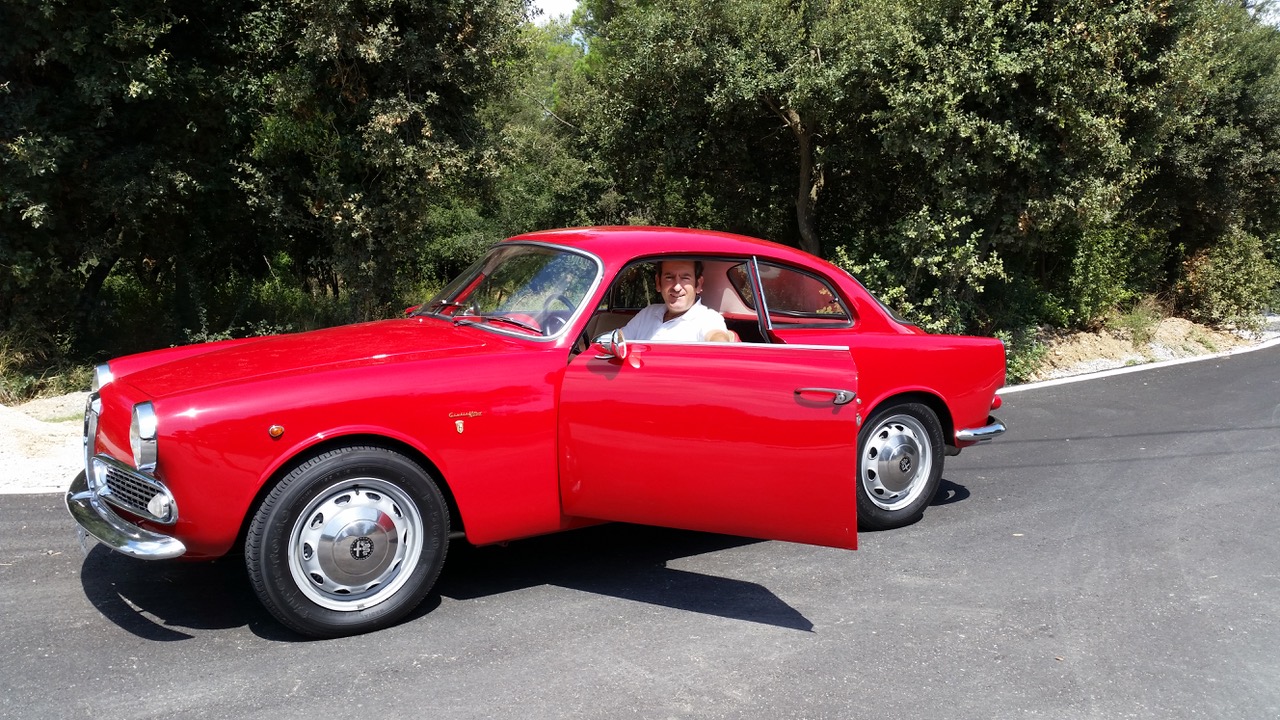The Latin spirit
A Spaniard from Madrid, Alejandro Mesonero is very proud of his Iberian identity and his Latin. In his collaboration with the Seat brand, this is reflected in a simple stylistic imprint with a sporty touch that is even more exaggerated in the case of Cupra. This sporty approach was confirmed with the Bigster concept car for Dacia and then in his work for his favorite brand, Alfa Romeo. A love for the transalpine brand that gave rise to the superb masterpiece, the sublime Stradale 33.
In this interview with Gentlemen Drivers Magazine, Mesonero reviews the main milestones that have marked his career, particularly with Alfa Romeo.
Discover the captivating story in PDF
Does your passion for cars go back to childhood?
Yes, I remember starting to draw at the age of 10-11. I was playing with miniatures like all children, but I was also imagining cars that didn’t yet exist. It was quite natural. I lived in a country house and spent hours watching cars drive past my house. I’m talking about the late 70s. I could recognize Porsche 911s by the sound of them, before I even saw them…
When did you decide to devote yourself to car design?
I was 17, I also liked architecture and engineering (my father was an engineer), but cars were really my passion. The technical side of it, but above all the more artistic, plastic side. At that time, it wasn’t easy to study car design. There were no schools in Spain. I had to move from Madrid to Barcelona to study industrial design and then specialize in car design, four years later, in London.
3-You have a special history with Seat, as you were involved in the revival of the Seat group between 1994 and 1996, and again between 2011 and 2020. What does this brand mean to you? And are you satisfied with your achievements with Seat?
Yes, I am. When I finished my studies in London, the VV Group offered me a job at SEAT in Barcelona. The fact that it was a brand with Spanish origins and part of a major automotive group, with a strong technical background and legendary brands, made me decide to accept the offer. What’s more, in the early 1970s, SEAT made a commercial film of the SEAT 128 Sport in the garden of my house in Madrid. This was perhaps the beginning of my relationship with SEAT.
The recent Tavascan, and Formentor for Cupra, as well as the fourth generation of the Leon, the fifth generation of the Ibiza and Arona for Seat reflect a new styling language on your part. What is the philosophy behind this?
For SEAT, the idea was to evolve the design language left by my predecessors, Luc Donkerwolke and Walter de Silva. Simplicity with character. Modern, dynamic, and Latin expressions. But with CUPRA, I’m trying to find a new language. Even more expressive, almost provocative. It was a ‘new’ brand, so it had to stand out in the street. But always with a good dose of simplicity and no baroquism.
You also left your mark at Renault from 2001 to 2011, notably on the Laguna Coupé. Did you feel a real break with Seat in terms of styling vision and working methods?
Yes, the French and German automotive cultures are different. The French focus on the on-board experience, comfort, travel… the stylistic break. The Germans base their work on the value of continuity, technical refinement, sometimes sportiness and perceived quality at all costs. I think I learnt from both cultures and then developed my own style. The managerial cultures are very different too.
You made a comeback at Renault to take charge of Dacia’s design. Why was your stint so short when the Bigster was so well received?
Quite simply. I thought I’d done my job at Seat/Cupra, after 11 years of heavy involvement. Then my ex-CEO Luca de Meo left for Renault in France. At that point, I had a few offers to go elsewhere, to more prestigious brands. But with fewer opportunities for good design. But Luca wanted to make his own revolution at Renault, at Dacia. He said to me, ‘Come on, we’re going to make a new Dacia that respects its philosophy. But younger, cooler, and more modern. Knowing Luca, I said to myself, ‘this is a great challenge’. I really enjoyed working with Luca at Seat, I like and respect his talent and his personality enormously, I knew the teams and I love France… So, the decision was easy.
However, 9 months later I got the call from Alfa Romeo. My favorite brand, a real symbol for me. A once in a lifetime opportunity. It was impossible to say no. It was a very difficult decision. It took me over a week to think about it. My wife, Hankyung and my daughters really pushed me not to worry about anything and to listen to my heart. And it’s done.
I’m happy with the result of the Bigster Concept and the production car, which has just been presented because it’s very close to the Concept. The Renault team has done a great job over the last three years.
Have you ever dreamed of designing for Alfa Romeo? What do you think makes the design of Alfa Romeo cars so appealing?
I think it’s due to the brand’s sporting history. The work of the ‘Carrozzieri’ of the 30’s, 40’s, 50’s, 60’s, 70’s. Works of art by Pininfarina, Bertone, Giugiaro, Carrozzeria Touring, Ghia, Franco Scaglione, and others. They have captured the Alfa spirit and reinterpreted it with their own philosophy. In Italy, designers have a very refined, emotional aesthetic sensibility. This is a historical fact that probably dates to the sculptures and painters of the Roman era.
One of your masterpieces at Alfa Romeo is the sublime 33 Stradale. Working on a project like this releases a lot of emotion, but at the same time imposes a great deal of responsibility. How did you manage it?
With a great deal of respect, humility and, as you say, emotion. Ever since I arrived in 2020, I’ve felt that I absolutely had to make a special car, to pay tribute to the history of Alfa Romeo. It’s easy to say, but in today’s automotive reality, that’s no easy task, indeed it’s almost impossible. But the advantage of working at Alfa is that we’re a small group of slightly crazy people (no more than 80 in total) and we don’t like the word ‘impossible’. And yet we’ve been hearing the word for no less than 16 months! We set to work, showing drawings to potential owners, and a few months later the car was created, with all the feasibility and production plans drawn up. The first Alfa Romeo of its kind since 1967 was born… Now it’s time to get the 33 Stradale right. We’re starting production of the first 00 proto before kicking off with the production of unit number 01 this year. At the same time, we’re starting work on the next One-Off…
On a more personal note, making a 33-unit hand-built Alfa Romeo for real enthusiasts, with a historic ‘Carrozzeria’ like Carrozzeria Touring Superleggera, is something unique in the career of any designer. That’s why I came to Alfa Romeo.
Where is Alfa Romeo’s design heading and how will it be affected by the switch to electrification?
Alfa Romeo has its own DNA, its own mechanical and aesthetic culture, and we’re coming to an historic moment when we all must adapt to new demands. There’s electrification, the arrival of new competitors from Asia, and a complex economic, industrial, and geopolitical context. Style can help to position the Alfa Romeo brand in a competitive context. Alfa Romeo’s design values are based on what the brand stands for, its incredible history, its sporting past, but also the fact that it is an Italian brand. I try not to let myself be ‘influenced’ by other factors. I wouldn’t make an electric car with an ‘electric’ look just for the sake of it. I’m making an Alfa Romeo and then we’ll have to see whether it can be electric or not.
What does the “Eurostars” award in the Design category received in 2018 mean to you?
I’d forgotten about that! Honestly, it’s a good thing. Not just for me, but for the team I represent, Seat / Cupra at the time. In the end, what I remember is that we’ve done a good job, with cars that please, that sell well and that allow the brand to move forward. But I’m always looking ahead because that’s where my future lies.
What are your favorite classic cars?
A difficult question for a true classic car enthusiast… Every week I could change my mind (laughs…)! It also depends on whether we’re talking about the 30s, 50s, 70s… That’s the beauty of our passion! But there are always some classics that can’t be ignored: the 1938 Alfa Romeo 8C 2900 Touring, the 1963 Chevrolet Corvette Rondine, the 1963 Alfa Romeo TZ, the 1968 Lamborghini Miura, the 1968 Ferrari 365 GTB4 Daytona… just to mention the first ones that come to mind.
What car do you drive every day?
A beautiful red Alfa Giulia « Veloce », with a dark red interior. One of the most fascinating cars to drive. Its chassis is just a masterpiece. I enjoy it every day. I’ve got 30 km of mountain road to drive to the Centro Stile… And at weekends I drive a 1969 Giulia GT Sprint ‘Giallo Ocra’, which is the same age as me…
Who is your favorite designer?
I have several, for different reasons. The elegance of Pininfarina, the intelligence of Giugiaro and the provocation of Bertone.
What are your other hobbies?
Reading (I have a beautiful bookshop with over 800 books), travelling with my classic cars in search of good restaurants (there’s certainly no shortage of them in Italy…) and spending time with my family. All in all, a pretty simple life.
Biography:
1968: born in Madrid
1995: he joined SEAT’s Design department in Martorell
2001: he signed with Renault and moved to Paris
2009: he was the design director of Renault Samsung Motors
2011: he returns to SEAT as Design director
2021: appointed Design Director of Dacia before leaving to take up the same position at Alfa Romeo.

